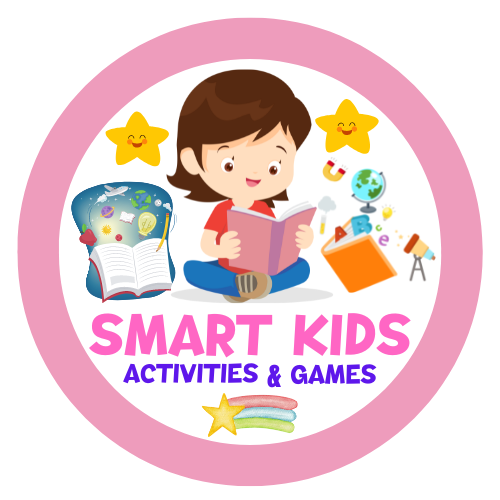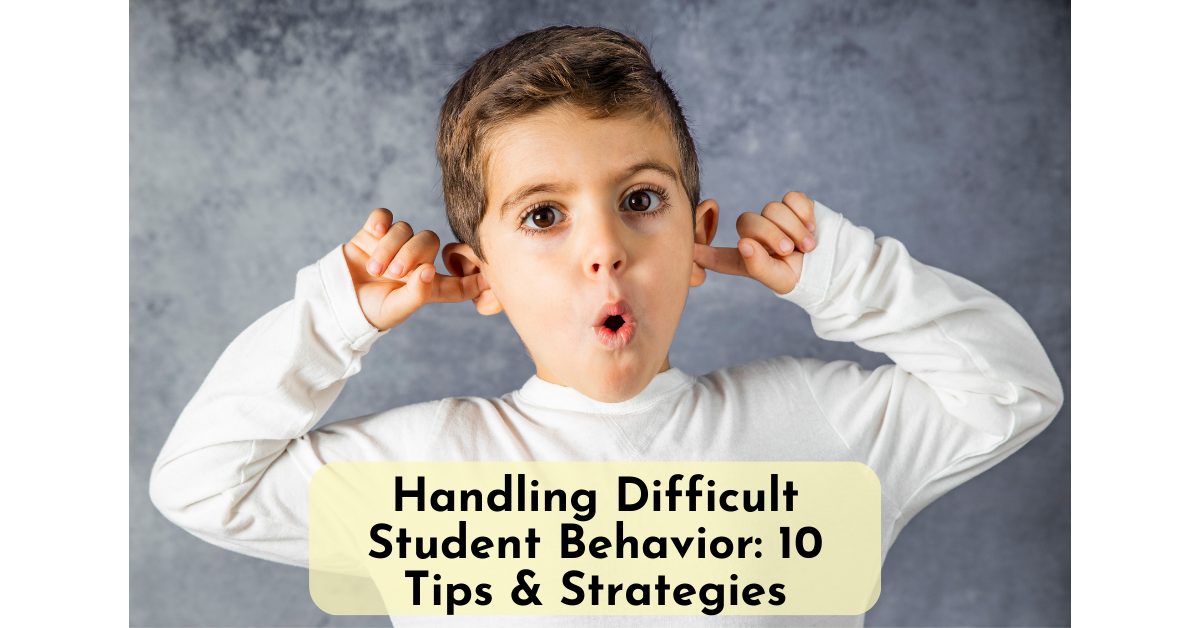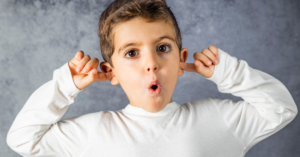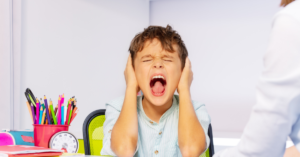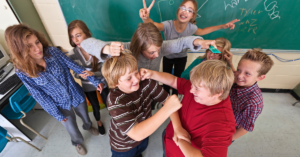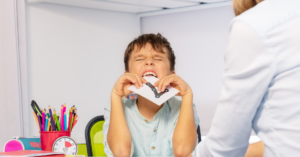Key Takeaways:
- Understanding and responding appropriately to defiant behavior is essential for effective discipline and student behavior management.
- Establishing clear expectations and consequences for behavior help prevent disruptive behavior in the classroom.
- Responding to disruptions in the moment requires staying calm, addressing behavior individually, and avoiding arguments or blame.
- Being proactive in handling challenging behaviors involves identifying underlying motives and using restorative practices.
- Building connections with students is key to preventing disruptive behaviors and reframing influence in a positive way.
The Importance of Responding to Defiant Behavior
When students display defiant behavior, it is crucial for teachers to respond appropriately. Effective discipline methods and student behavior management play a vital role in handling challenging students. By addressing these behaviors promptly and effectively, teachers can create a positive classroom environment and promote student growth.Three Approaches to Responding
- Disengaging: When faced with defiant behavior, teachers can choose to disengage from power struggles. This involves avoiding arguments or escalating the situation further. Instead, teachers can redirect the student’s focus or shift their attention to a different task or topic.
- Interrupting: Another method is to interrupt the defiant behavior by calmly intervening and setting boundaries. This can be done by using a neutral voice and maintaining a calm demeanor. By asserting authority and stopping the disruptive behavior, teachers can assert control and maintain a respectful classroom environment.
- De-escalating: Sometimes, defiant behavior may escalate, making it necessary for teachers to de-escalate the situation. This involves employing techniques to calm and diffuse the student’s emotions, such as deep breathing exercises or offering a quiet space to gather their thoughts. By providing a supportive and understanding approach, teachers can help students regain their composure and engage in productive behavior.
“When dealing with defiant behavior, it’s important for teachers to respond calmly and assertively. By maintaining control of the situation and responding promptly, teachers can guide students towards appropriate behavior and create a positive classroom atmosphere.” – John Smith, Education Specialist
Implementing Effective Discipline Methods
Effective discipline methods are essential for managing student behavior. It’s important for teachers to prioritize consistency and fairness while addressing defiant behavior. By employing a variety of strategies, teachers can guide students towards positive choices and ensure a safe and conducive learning environment. Here are some effective discipline methods:| Effective Discipline Methods | Description |
|---|---|
| Clear Expectations | Establishing clear expectations and rules helps students understand what is expected of them. By setting clear boundaries, teachers can prevent defiant behavior and promote a positive classroom culture. |
| Positive Reinforcement | Recognizing and reinforcing desired behavior with praise or rewards encourages students to make positive choices. By focusing on the positive, teachers can motivate students to exhibit appropriate behavior more consistently. |
| Consequences | Consistent and fair consequences for defiant behavior can help students understand the implications of their actions. By applying consequences that are appropriate, teachers can promote accountability and discourage the repetition of challenging behavior. |
| Restorative Practices | A restorative approach focuses on repairing harm caused by behavior and building positive relationships. By involving the student in problem-solving and emphasizing understanding, teachers can address the root causes of defiant behavior and foster growth. |
Classroom Management Strategies for Disruptive Behaviors
When faced with disruptive behaviors in the classroom, teachers can employ various behavior management strategies to create a positive learning environment. By utilizing these strategies, teachers can effectively address and manage disruptive behaviors, while promoting student engagement and academic success.Staying Calm and Using a Low or Neutral Voice
One effective strategy for managing disruptive behaviors is for teachers to remain calm and maintain a low or neutral voice when addressing students. By doing so, teachers can model appropriate behavior and help de-escalate tense situations. It also sets an example of emotional regulation for students to follow.Validating Student Feelings and Listening Without Judgment
It is important for teachers to validate student feelings and listen without judgment when addressing disruptive behaviors. By acknowledging students’ emotions and perspectives, teachers can create a safe space for open communication and problem-solving. Empathy and understanding can encourage students to express themselves more constructively.Encouraging Breaks and Calming Strategies
An effective strategy for managing disruptive behaviors is to provide students with opportunities for breaks and to teach them calming strategies. By allowing students to take short breaks when they are feeling overwhelmed or providing them with tools such as deep breathing exercises or mindfulness techniques, teachers can help students self-regulate and refocus their attention.Providing Clear Instructions Using Few Words
Clear instructions using concise language can be highly effective in managing disruptive behaviors. By providing clear and simple directions, teachers can minimize confusion and reduce the likelihood of students becoming off-task or disruptive. Using visual aids or gestures can further enhance understanding and engagement.Recognizing and Praising Desired Behaviors
Recognizing and praising desired behaviors is a powerful strategy to encourage positive classroom behavior. By publicly acknowledging and praising students when they exhibit appropriate behavior, teachers reinforce the importance of respectful and engaged participation. This positive reinforcement helps students feel valued and motivates them to continue exhibiting positive behavior.A Visual Summary of Classroom Management Strategies for Disruptive Behaviors:
| Strategy | Description |
|---|---|
| Stay Calm | Remain calm and composed when addressing disruptive behaviors. |
| Use a Low or Neutral Voice | Speak in a tone that is calm, low, and neutral to de-escalate tense situations. |
| Validate Student Feelings | Acknowledge and validate students’ emotions and perspectives without judgment. |
| Encourage Breaks | Provide opportunities for students to take short breaks when feeling overwhelmed. |
| Teach Calming Strategies | Teach students techniques such as deep breathing or mindfulness to self-regulate. |
| Give Clear Instructions | Provide concise and specific instructions to minimize confusion and disruptions. |
| Recognize Desired Behaviors | Publicly acknowledge and praise students when they exhibit appropriate behavior. |
Establishing Norms for Preventing Disruptive Behavior
Establishing clear norms and expectations for behavior is essential in creating a positive and respectful classroom environment. By setting classroom behavioral expectations and academic standards, teachers can effectively prevent disruptive behavior and foster a conducive learning environment.Outlining Productive and Disruptive Behavior
When establishing norms, it is crucial for teachers to outline both productive and disruptive types of behavior. By clearly defining and communicating these expectations, students understand what is considered acceptable behavior and what is not. This clarity helps set a foundation for a harmonious classroom setting.Setting Clear Consequences
In addition to outlining norms, teachers must establish clear consequences for ongoing disruptive behavior. By clearly communicating the consequences to students, they understand the potential outcomes of their actions. This knowledge serves as a deterrent for engaging in disruptive behavior and encourages students to adhere to the established norms.| Norms and Expectations | Consequences |
|---|---|
| Active participation in class discussions | Verbal warning |
| Respecting others’ opinions | Loss of participation points |
| Completing assignments on time | Extra assignments as makeup work |
| Using appropriate language | Time-out or detention |
| Respecting personal space | Parent-teacher conference |
Discussing and Modeling Expected Behavior
On the first day of class, teachers should take the time to discuss the established norms and expectations with students. This discussion ensures that all students are aware of the behavioral standards set for the class. Furthermore, teachers should model the expected behavior themselves to provide students with a clear example to follow.As educators, it is our responsibility to create a positive and respectful learning environment. By setting clear norms and expectations, we empower our students to thrive academically and socially.Establishing norms and consequences is a vital step in preventing disruptive behavior in the classroom. By outlining behavioral expectations, setting academic standards, and modeling appropriate behavior, teachers can create an environment conducive to learning and personal growth.
Responding to Disruptions in the Moment
When disruptive situations arise in the classroom, it is crucial for teachers to handle them calmly and address them immediately. By maintaining composure, educators can effectively address disruptive behavior and maintain a positive learning environment. One key aspect of addressing disruptive behavior is actively listening to student concerns and acknowledging their feelings. This demonstrates empathy and helps in understanding the underlying reasons for their behavior. By showing that their feelings are being heard and valued, teachers can establish a foundation for resolving the disruption. Furthermore, it is important for teachers to be firm and consistent in setting limits and boundaries. Clearly communicate expectations and consequences, ensuring that students understand the behavior that is expected of them. This establishes a sense of structure and accountability. If a student’s disruptive behavior persists and poses a significant distraction to the class, teachers may need to temporarily remove the student from the session. This action not only addresses the disruption at hand but also allows for a more focused and productive learning environment for the rest of the students. After class, the teacher can have a one-on-one conversation with the disruptive student to address the behavior and work towards finding a resolution. Throughout the process of addressing disruptive behavior, it is essential to avoid engaging in arguments, placing blame, or physically touching the student. These actions can escalate the situation and hinder the potential for a constructive resolution.Key Strategies for Handling Disruptive Situations:
- Listen actively and acknowledge student concerns
- Set firm and consistent limits and boundaries
- Remove disruptive students from the class session if necessary
- Have a one-on-one conversation with the student to address the behavior
- Avoid arguments, blame, or physical contact
“Responding to disruptive behavior with calmness and assertiveness allows teachers to address the behavior effectively and maintain a positive learning environment.” – Dr. Lisa Anderson, Educational Psychologist
| Consequences of Addressing Disruptive Behavior | Benefits of Addressing Disruptive Behavior |
|---|---|
| Restored focus and productivity in the classroom | Cultivates a positive learning environment |
| Opportunity for one-on-one conversations to understand and address underlying issues | Enhances student-teacher relationships |
| Establishes clear boundaries and expectations | Promotes a sense of accountability |
Intervening Proactively with Challenging Behaviors
When faced with challenging behaviors in the classroom, teachers can take a proactive approach to address and manage them effectively. This involves identifying the underlying motives behind these behaviors and treating them as adaptive and communicative rather than solely disruptive. By understanding the reasons behind challenging behaviors, teachers can better respond and support their students. It is essential for teachers to reflect on their own role in these exchanges, considering how their actions and reactions may influence student behavior. Approaching students with curiosity and humility can help build positive relationships and create a safe environment for addressing challenging behaviors.Identifying Challenging Behaviors
One key aspect of proactive intervention is identifying the challenging behaviors exhibited by students. This involves observing and understanding the triggers, patterns, and functions of these behaviors. Instead of viewing these behaviors as mere disruptions, teachers can recognize them as forms of communication, indicating unmet needs or underlying issues.“Identifying challenging behaviors is the first step towards addressing them effectively,” says Dr. Sarah Thompson, a renowned child psychologist. “It allows teachers to respond with empathy and develop strategies that support student well-being and academic success.”
Treating Behaviors as Adaptive and Communicative
To proactively intervene with challenging behaviors, teachers can shift their perspective and regard these behaviors as adaptive and communicative responses. This mindset allows teachers to approach students with empathy and understanding, aiming to meet their needs and foster healthy communication. By treating behaviors as adaptive and communicative, teachers can ask questions and listen actively to students, rather than criticizing or attempting to fix their behavior. This approach helps build trust and opens opportunities for meaningful dialogue and problem-solving.Restorative Practices
Restorative practices can be valuable tools in proactively addressing challenging behaviors. Restorative practices prioritize relationship building and provide a framework for addressing the harm caused by these behaviors. This approach involves engaging students in conversations, allowing them to take responsibility for their actions, and working towards healing and positive change. Implementing restorative practices helps create a supportive classroom environment where students feel heard and valued. It allows teachers to address the underlying causes of challenging behaviors and guide students towards more positive outcomes.Connecting with Students to Prevent Disruptions
Building strong connections with students is vital in preventing disruptive behaviors in the classroom. By actively engaging with students and understanding their perspectives, teachers can create a positive and supportive learning environment. Here are three effective strategies for connecting with students to promote positive behavior:1. Surveying Students
To gain insights into student experiences and preferences, teachers can conduct surveys. These surveys can cover topics such as classroom dynamics, instructional methods, and student interests. By collecting and analyzing survey data, teachers can tailor their approaches to better meet the needs and expectations of their students. It is essential to take action based on the survey results, showing students that their opinions and feedback are valued.2. Observing Student Interactions
By actively observing student interactions, teachers can gain valuable insights into group dynamics and individual behaviors. This can be done through classroom discussions, group work, or informal conversations. Through this process, teachers can identify potential issues, conflicts, or concerns among students. By addressing these issues proactively, teachers can prevent disruptions before they occur and foster a more harmonious classroom atmosphere.3. Offering Compliments and Support
Recognizing and acknowledging students’ efforts and achievements is an effective way to build rapport and motivate positive behavior. Teachers can provide verbal compliments, written notes, or small rewards to celebrate students’ accomplishments, both academic and social. Moreover, teachers can offer emotional support and encouragement when students are facing challenges. By showing genuine care and interest in their well-being, teachers can establish trust and strengthen their relationships with students. Connecting with students through surveys, observations, and support is crucial in preventing disruptive behaviors. By understanding students’ needs and perspectives, teachers can create a positive and engaging learning environment that promotes mutual respect and effective classroom management.| Benefits of Connecting with Students |
|---|
| Enhanced classroom atmosphere |
| Improved student engagement and participation |
| Reduced disruptive behaviors |
| Increased student motivation and academic performance |
| Stronger teacher-student relationships |
Collaboration and Follow-Up for Student Behavior
Collaborating with other teachers is an essential approach for effectively handling challenging student behaviors. By working together, educators can share valuable information, brainstorm effective strategies, and find solutions that can improve the overall classroom environment. When collaborating with other teachers, it is important to approach the discussions in a proactive and solution-focused manner. Instead of simply focusing on complaints or venting frustrations, the goal should be to identify actionable steps and support each other in implementing them. To successfully manage challenging behaviors, it is crucial for teachers to continually monitor and adapt their strategies. By paying close attention to what is working and what is not, educators can make informed decisions about adjusting their approaches. Seeking feedback from students can also provide valuable insights into the effectiveness of certain strategies. It is important to celebrate even small victories in managing student behavior. Recognizing and acknowledging progress can help motivate both students and teachers to continue working towards positive outcomes. Commitment to ongoing dialogue and trusting the process is key in effectively addressing and managing challenging student behaviors. By maintaining open lines of communication, teachers can continue to collaborate, share resources, and support each other’s efforts in maintaining a positive learning environment. In summary, collaborating with other teachers, seeking additional resources, and consistently monitoring and adapting strategies are essential elements in effectively handling challenging student behaviors. By working together and remaining committed to ongoing dialogue, educators can create a supportive and conducive learning environment for all students.Follow-Up and Documentation
Following a disruptive incident in the classroom, it is crucial for teachers to document the details, actions taken, and resolution. Proper documentation helps ensure clarity, accountability, and consistency in handling student behavior. For minor disruptions, teachers can use email as a convenient tool for communication and documentation. Sending an email to the student and their parents, outlining the incident and any consequences, provides a written record that can be easily referenced in the future. However, for more serious or ongoing incidents, it is essential to involve departmental leadership. Departmental leaders can provide guidance, support, and additional resources to address the situation effectively. Collaborating with colleagues and seeking their insights can bring fresh perspectives and innovative strategies to manage challenging behaviors. When a disruptive incident occurs, it is beneficial for teachers to meet with the student involved. This meeting provides an opportunity to discuss the behavior, understand the underlying causes, and establish clear guidelines and consequences moving forward. By engaging in a respectful conversation, teachers can help students recognize the impact of their actions and encourage personal growth. Table: Documentation Checklist| Items to Document | Description |
|---|---|
| Incident Details | Record the date, time, location, and a brief description of the disruptive incident. |
| Actions Taken | Summarize the immediate responses, interventions, or disciplinary measures implemented to address the behavior. |
| Communication | Note any conversations, emails, or notifications sent to the student, parents, or other relevant parties regarding the incident. |
| Resolution | Document the steps taken to resolve the issue, such as discussions, disciplinary consequences, or referrals to support services. |
Conclusion
Successfully handling difficult student behavior requires effective classroom management strategies and a focus on building relationships. By implementing the tips and strategies discussed in this article, teachers can create a positive and respectful learning environment. One key aspect of effective classroom management is building relationships with students. By taking the time to know and understand each student individually, teachers can establish trust and create a supportive classroom community. Celebrating progress, both academically and behaviorally, is also essential. Recognizing and acknowledging students’ efforts and achievements can motivate them to continue making positive choices. Teachers should also remember to trust the process. Addressing and managing challenging behaviors takes time and patience. By being proactive and responsive, educators can consistently apply appropriate strategies and interventions. It is crucial to maintain open lines of communication with students, seeking their input and feedback, and adapting strategies as needed. In conclusion, effective classroom management, building relationships, and celebrating progress are fundamental elements in handling difficult student behavior. By prioritizing these aspects, teachers can create a positive and conducive learning environment where students feel valued, supported, and motivated to succeed.FAQ
How can teachers deal with difficult student behavior?
Teachers can deal with difficult student behavior by responding appropriately, staying calm, and implementing various strategies for addressing disruptive behaviors.
What are some effective classroom management strategies for handling challenging students?
Effective classroom management strategies for handling challenging students include establishing clear norms and expectations, responding calmly and immediately to disruptions, and proactively building connections with students.
How can teachers prevent disruptive behavior in the classroom?
Teachers can prevent disruptive behavior in the classroom by setting clear behavioral expectations, discussing these expectations with students, and modeling the desired behavior.
What should teachers do when faced with a disruption in the classroom?
When faced with a disruption in the classroom, teachers should respond calmly, listen to student concerns, acknowledge their feelings, and set firm and consistent limits on behavior. If necessary, they may remove a disruptive student from the class session.
How can teachers intervene proactively with challenging behaviors?
Teachers can intervene proactively with challenging behaviors by identifying and reflecting on the underlying motives for these behaviors, approaching students with curiosity and humility, and using restorative practices to prioritize relationship building and address the behaviors.
What can teachers do to prevent disruptive behaviors and build connections with students?
Teachers can prevent disruptive behaviors and build connections with students by surveying students, observing their interactions, and using the data to inform conversations and seating arrangements. They can also offer compliments, support, and leadership opportunities to reframe their influence from disruptive to positive.
How can collaboration with other teachers help in handling challenging student behaviors?
Collaboration with other teachers can provide information, effective strategies, and solutions for handling challenging student behaviors. It is important to frame these conversations as proactive and solution-focused.
What should teachers do after a disruptive incident in the classroom?
After a disruptive incident in the classroom, teachers should document the details, actions taken, and resolution. For minor disruptions, an email can serve as both a tool for communication and documentation. More serious or ongoing incidents may require involvement from departmental leadership and additional resources and support.
What is the importance of follow-up and documentation in dealing with difficult student behavior?
Follow-up and documentation are important in dealing with difficult student behavior as they provide a record of incidents, help track patterns, and ensure that appropriate actions are taken. They also serve as a means of communicating expectations and preventing further disruptions.
How can teachers effectively address and manage challenging behaviors in the classroom?
Teachers can effectively address and manage challenging behaviors in the classroom by implementing the tips and strategies discussed in this article, focusing on building relationships with students, and celebrating progress. Effective classroom management and a positive learning environment are key to handling difficult student behavior.
Download free activities and teaching resources Click Here
You may also be interested in
AI in Kids Education: Trends & Benefits
The Importance of Parent-Teacher Collaboration
Boost Your Brain: 10 Ways to Improve Learning Skills
Exploring Technology’s Role in Education Today
Source Links
- https://www.sociallyskilledkids.com/blog/top-10-ways-to-respond-to-defiant-behavior-in-the-classroom
- https://dsl.uw.edu/faculty/disruptive-behavior-in-the-classroom/best-practices/
- https://www.edutopia.org/article/strategies-managing-challenging-student-behaviors/

